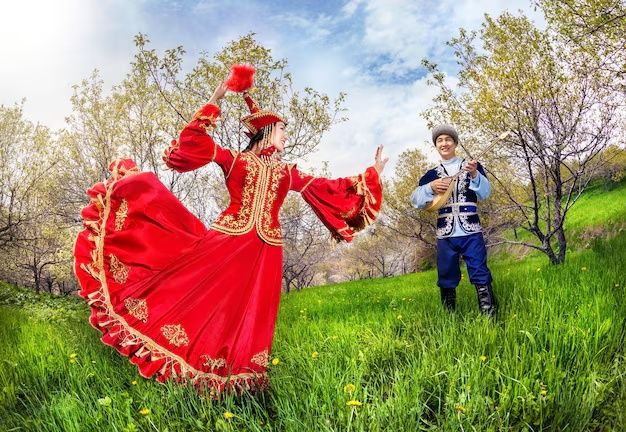Kazakhstan is a large, multiethnic country in Central Asia with a mix of cultural, religious, and historical influences. Public holidays in Kazakhstan include state or national holidays (marking historic events or founding dates), religious holidays, and traditional festivals rooted in the customs of its many peoples.
These holidays serve multiple purposes: they celebrate national identity, renew cultural and community bonds, recognize religious observances, and provide time for rest and family.
Importance: Why These Holidays Matter Today
Holiday observances in Kazakhstan are more than days off—they play key roles in:
-
Cultural unity and diversity: Kazakhstan has many ethnic groups, and holidays help reinforce respect for different traditions, languages, and faiths. Unity Day on May 1 is one example that highlights interethnic peace.
-
National identity and history: Independence Day on December 16 commemorates the country’s exit from the Soviet Union in 1991. Constitution Day on August 30 marks when the national constitution was adopted.
-
Social cohesion and tradition preservation: Festivals like Nauryz link generations to ancient customs, including food, dress, songs, and games. They help keep cultural heritage alive.
-
Legal and social structure effects: Holidays affect work schedules, schools, public services, and cultural rights. The designation of official holidays influences how daily life is organized.
Recent Updates: Changes, Trends, or News
| Date | What Happened | Significance |
|---|---|---|
| 2022-2023 | The “Day of the First President” (December 1) was removed from the list of public holidays and is now observed only as a commemorative day. | This reflects a shift in how holidays tied to political figures are recognized. |
| June 2025 | A law was passed banning face-coverings in public places, including garments that interfere with facial recognition. | Although not specifically about holidays, this law influences how religious and cultural attire may be worn during celebrations. |
| Annual calendar adjustments | Dates for Islamic holidays like Eid al-Adha and Eid al-Fitr shift each year based on the lunar calendar. Multi-day holidays such as Nauryz are set officially as three days. | This shows the blend of solar and lunar systems in national holiday planning. |
Laws or Policies: How Rules and Government Programs Shape Holidays
Official Holiday Law
The Law on Holidays in the Republic of Kazakhstan establishes state and public holidays. On these days, most schools, public offices, and many businesses are closed.
Some dates are commemorative rather than full public holidays. They may be observed in ceremonies or cultural programs without granting a day off.
Religious Observance Laws
Religious holidays, including Islamic ones such as Eid al-Adha and Eid al-Fitr, are officially recognized, though their dates depend on lunar observations.
The constitution provides for religious freedom, but there are also regulations. Recent laws concerning religious dress influence how holidays are observed in public spaces.
Language and Cultural Policy
Holiday observances intersect with Kazakhstan’s cultural policy, which emphasizes support for traditions and multiethnic representation. For example, Unity Day is a reflection of interethnic respect and cultural harmony.
Tools and Resources: Where to Find More Information
-
Government portals — for official holiday lists and state announcements.
-
Calendar and almanac sources — for updated holiday dates and cultural background.
-
Religious organizations — for confirmation of dates of Islamic and Christian observances.
-
Museums and cultural centers — for learning about traditional celebrations, crafts, music, and heritage.
-
News media — to stay updated about legal or cultural changes affecting holidays.
FAQs: Frequently Asked Questions
What are some of the major public holidays in Kazakhstan?
-
New Year (January 1-2)
-
International Women’s Day (March 8)
-
Nauryz (March 21-23)
-
Unity Day (May 1)
-
Defender of the Fatherland Day (May 7)
-
Victory Day (May 9)
-
Capital Day (July 6)
-
Constitution Day (August 30)
-
Republic Day (October 25)
-
Independence Day (December 16)
How is Nauryz celebrated?
Nauryz is a multi-day holiday usually lasting three days. Traditions include preparing special meals such as nauryz-kozhe, visiting relatives, hosting outdoor cultural events, playing traditional games, and enjoying music and dance.
Do all religious holidays have fixed dates?
No. Islamic holidays such as Eid al-Adha and Eid al-Fitr follow the lunar calendar, so their dates shift each year. The government declares official observance dates.
Has any holiday been removed or changed recently?
Yes. The Day of the First President, once a public holiday, has been downgraded to a commemorative day since 2022.
Are there restrictions or rules affecting how people celebrate?
Yes. Public celebrations are shaped by regulations on gatherings, religious attire, and ceremonial practices. Recent laws restricting face coverings, for example, influence how religious attire may be worn during certain holidays.
Conclusion
Holidays in Kazakhstan reflect a blend of ethnic traditions, religious practices, and national history. They are shaped by law, cultural policy, and evolving social conditions. Recent changes, such as the adjustment of commemorative dates and new regulations on public dress, show how holiday observances adapt over time.
These celebrations provide insight into how Kazakhstan balances tradition and modern identity. Observing them highlights what the country values, remembers, and shares across its diverse communities.